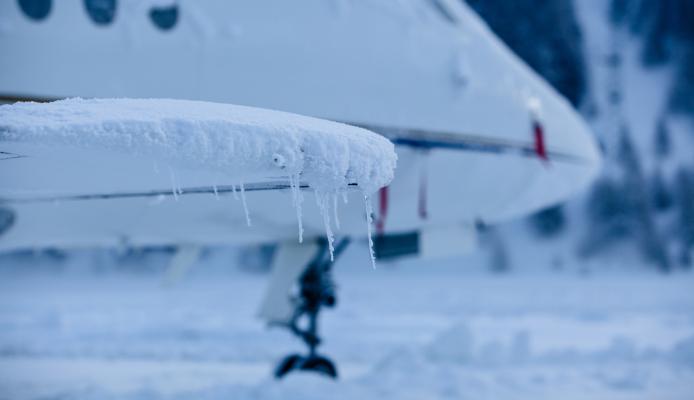Wintry conditions and especially supercooled liquid precipitation can pose hazardous situations for flight operations and become an aviation safety and efficiency issue. Airframe icing (i.e., supercooled water droplets that freeze on impact with any part of the external structure of an aircraft during flight) can lead to reduced performance, loss of lift, altered controllability and ultimately stall and subsequent loss of control of the aircraft. Icing continues to be a significant factor in numerous fatal aircraft accidents. Also, overly conservative icing condition forecast guidance typically covers more space and time than needed, thus denying use of aircraft or airspace unnecessarily. Moreover, required aircraft deicing prior to takeoff and treatment of snow and ice contaminated airport surfaces and runways can lead to operational delays and airport capacity reductions.
Research conducted at NCAR is focused on improved diagnosis and prediction of icing conditions based on making use of a variety of observations and high-resolution numerical weather prediction model output for the generation of guidance products used by pilots, dispatchers, air traffic managers, and meteorologists to make timely decisions on icing threat areas, optimum routings, holding patterns, and areas to avoid in compliance with FAA regulations and policies. Research is also conducted into novel automated measurement of precipitation types and testing of deicing fluids under varied wintry conditions. Moreover, research and guidance product development are underway for the detection and prediction of high-altitude engine icing hazard conditions. This hazard has been receiving increased attention lately in that the ingest of large amounts of small ice crystals into jet engines can cause them to fail during flight.
Research and Development Areas
Ground Icing
Snow and ice on a plane’s wings can prohibit it from gaining enough lift and taking off safely. Airlines and airport operations personnel need detailed information on the amount of ice and snow that can accumulate and dilute deicing fluids which indicates how much time a plane may be able to maximally wait between deicing operations and takeoff. NCAR research showed that this time directly corresponds to the amount of water in the snow (i.e., Liquid Water Equivalent), rather than visibility which had traditionally been used to determine de-icing and take off decisions. In addition, airline and airport operators need guidance with regard to how effective a runway may allow for aircraft braking upon landing and how often a runway will need to undergo snow and ice removal treatments.
- Winter weather observations
- Precipitation type identification
- Terminal area icing
- Tarmac winter maintenance
- Maintenance Decision Support System (MDSS)
- Weather Support to Deicing Decision Making (WSDDM)
- Deicing (CheckTime)
Inflight Icing Observation
Pilots may report inflight icing conditions. PIREPs have typically been the only source of icing information, yet these reports are incomplete since reporting is voluntary. Meteorological conditions leading to inflight icing are typically deduced based on moisture and temperature observations. NCAR research has shown that radar and satellite observations can also provide indications of icing conditions through processing using smart algorithms. This information is incorporated into the icing guidance products.
Inflight Icing Prediction
The inflight icing research is focused on enhancing and effectively using high-resolution and frequently-updating numerical weather prediction models to diagnose and forecast icing conditions hazardous to flight operations. The NCAR research has produced improved microphysical descriptions and algorithms for weather prediction models and state-of-the-art icing condition hazard guidance products that are operationally used by the aviation industry. The latest versions of the Current (CIP) and Forecast Icing Products (FIP) are based on NOAA’s operational High-Resolution Rapid Refresh (HRRR) model and provide hourly-updating icing hazard guidance with lead times up to 18 hours. The CIP incorporates relevant observations as well. A special version of CIP is being implemented for Alaska, and global CIP and FIP coverage is operationally provided by the NWS Aviation Weather Center as well. A High Ice Water Content (HIWC) product is being developed to provide guidance regarding engine icing hazard conditions.
